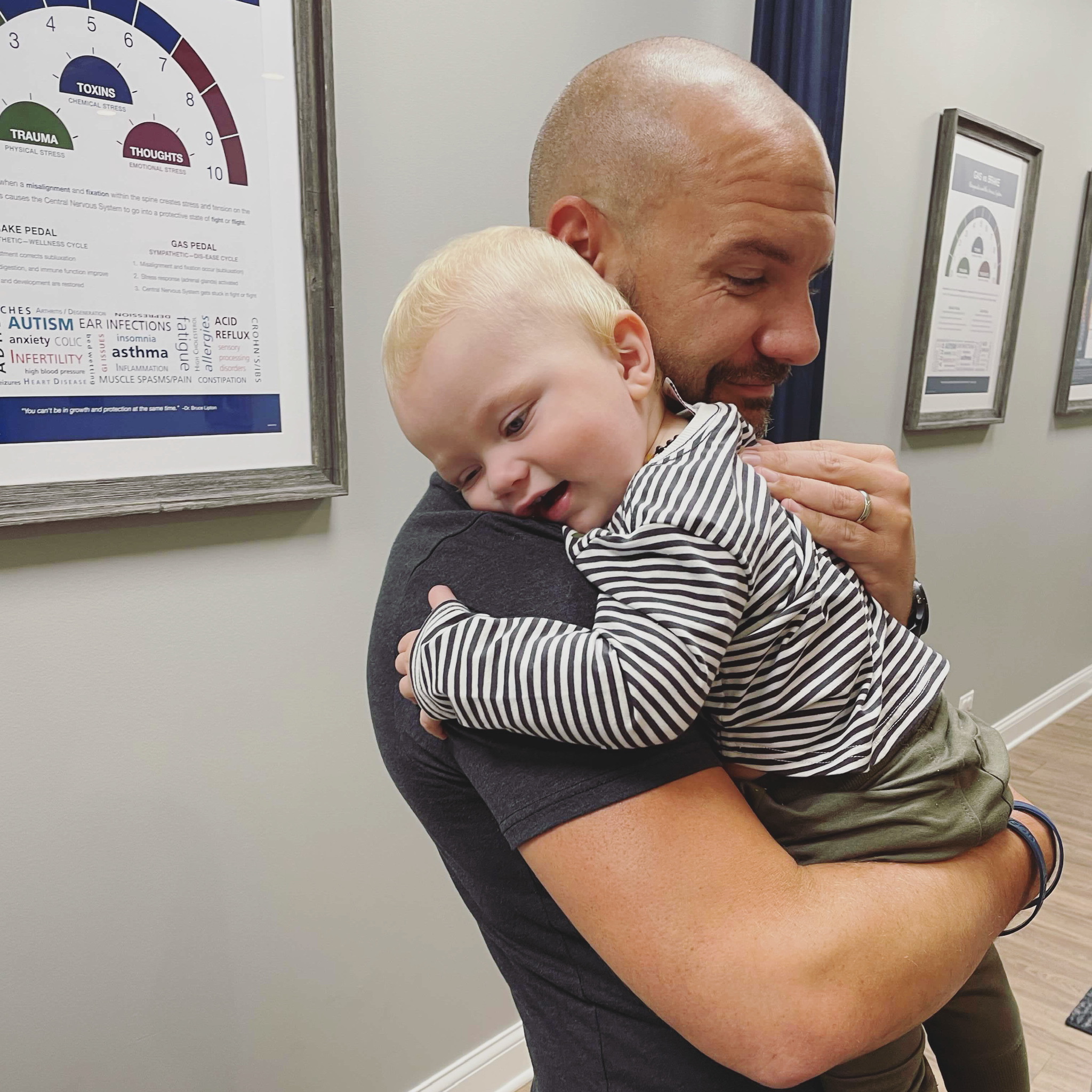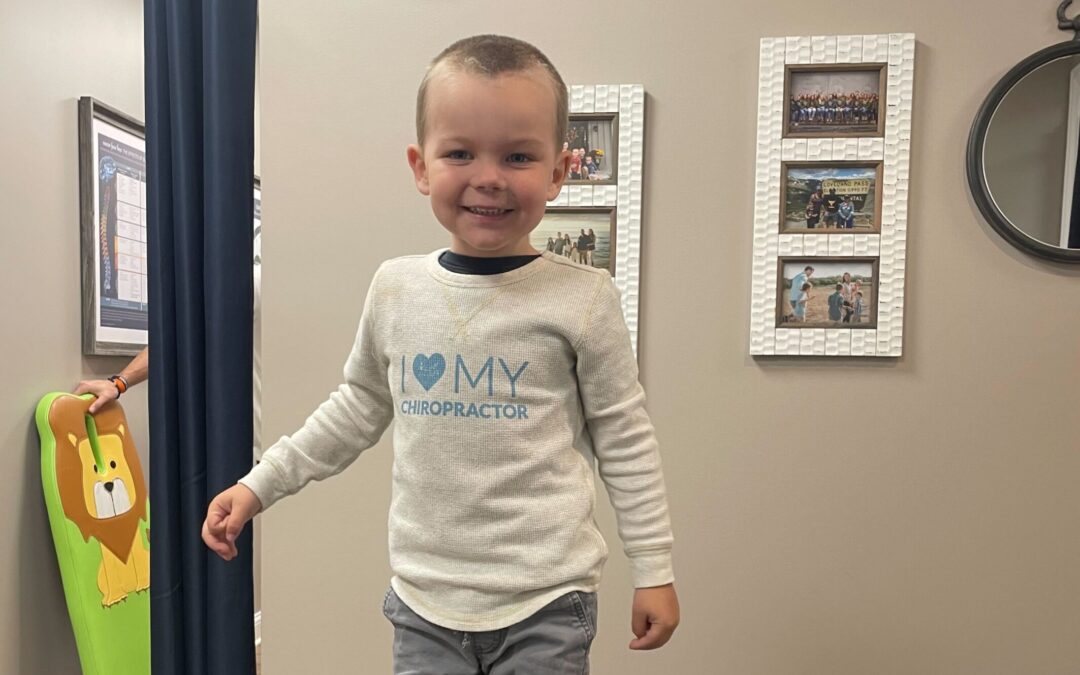It was happening again. This was already the third time that year that Oliver’s cough would get way worse at night, leading to that distinctive, scary barking cough that is common with croup.
Unfortunately, we weren’t all that surprised that Oliver struggled with respiratory illnesses and challenges that first year of life because not only are things like croup quite common for little ones, but he had suffered from a traumatic birth and had spent his first 6 weeks of life in the NICU primarily battling significant respiratory challenges.
In fact, starting out, Oliver’s lungs were working so poorly from his condition (Persistent Pulmonary Hypertension or PPHN) that he needed to have a procedure called ECMO, which is a heart-lung bypass procedure.
While almost every parent will get quite concerned when they hear their child with that harsh, barking cough and trouble breathing at night, we were extra heightened to stress knowing the tough start Oliver’s lungs had already had in life.
So while the first time we made it through with just chiropractic adjustments and natural remedies we had at home, the second time he struggled badly with croup late at night, my wife took him to the emergency room. And again, a month or so later, when he had it for the third time, we took him to the hospital late at night once again.
But here’s where our story differs from most with croup, and where this article will not be your standard medical info-only article about croup – we only used one tiny dose of medication (corticosteroid) out of the three different times Oliver got sick that first year of life.
Why did we always turn to adjustments and natural options and save medications as the absolute last resort? We certainly are not ‘against’ medical treatments, as we saw the best of modern medicine (surgeries, medications, etc.) literally save Oliver’s life starting out. But, we also had both the scientific understanding and my clinical experience to know that the more often a young child under the age of 2 is given medications for respiratory + immune challenges, the sicker and sicker they get as time goes on.
So all the way back then and still today, our family takes care of our health in this order – natural everything first, medications last. We look to build strong, resilient immune systems in our kids, not suppress and weaken them.
What is Croup?
Croup is an upper airway infection that restricts breathing and leads to a distinctive barking cough. It is most common in young children aged 6 months to 3 years and is even more common in infants born early (premature) or suffer from other respiratory and immune challenges such as asthma.
There are 3 different kinds of croup:
- Viral Croup – this one usually starts as a common cold and cough, with low-grade fever, and then can turn into croup
- Spasmodic Croup – this type can be caused by an allergy or even reflux, which then creates a reaction and spasm within the upper airway that leads to croup
- Croup with Stridor – most common with mild croup, but as the condition worsens and the child becomes more stressed (continued coughing, not eating and drinking, difficulty sleeping, etc.), it can turn more severe.
What are the Symptoms of Croup?
The symptoms of croup are quite apparent and distinctive. Like so many respiratory challenges in kids, it can start as a simple cold or even teething and then worsen to include symptoms such as:
- Loud barking cough
- Crying and agitation, and anxiety caused by coughing.
- Fever
- Hoarse voice
- Labored breathing that may create a high pitch or squeaking noise (called stridor)
- Fast breathing or retractions when the skin between the ribs is pulled in during breathing.
- Child may appear blueish around the mouth due to a lack of oxygen
- Losing their voice (called laryngitis)
What makes croup especially challenging for parents is that symptoms tend to get worse at night.
How is Croup Diagnosed?
It is pretty simple and straightforward to diagnose croup. A medical professional will observe your child’s breathing, listen with a stethoscope, and examine their throat and upper airway for inflammation. If breathing is labored, they may order a neck and/or chest x-ray and use pulse oximetry to check their oxygen levels.
What Causes Croup?
Since, most often, croup comes from a cold that continues to worsen, irritate the airway, and ramp up inflammation, when trying to find the cause, we can look to the same things as the common cold.
But here at PX Docs, we do not look at things the same way as the medical system does when addressing the cause. Most medical doctors continue to tell parents that things like colds and croup come from being exposed to others who are sick and that things are spread through respiratory droplets, touching contaminated surfaces, etc.
But the health of our kids was really such a one-sided game where every time they’re exposed to germs, they’re sure to get sick, we’d actually have even more illness in kids than we already do.
When looking at the cause of respiratory illnesses in our patients, we tend to look first at things that could be lessening their resilience and stressing out their nervous and immune systems.
The most common case history findings we’ve discovered that stress out the neuro-immune system and leave a child most susceptible to colds, croup, and the like are:
- Lots of distress during the fertility process and pregnancy
- Birth intervention and trauma (induction, forceps, vacuum, c-section, etc.)
- Difficulty latching, nursing, and breastfeeding
- Colic and difficulty sleeping
- Digestive challenges such as reflux and constipation
- Developmental challenges or delays within the motor system, sensory processing, etc.
And then, when looking at the case in real-time, 3 very common life findings tend to accompany the onset of common colds and even croup in kids:
- Growth spurts – which place extra stress and fatigue on the system, especially the nervous system and muscles
- Teething – which brings extra stress through added pain, trouble sleeping, and increased fluid congestion in the upper respiratory area
- Seasonal changes – as simple as it sounds, significant changes in weather patterns can really stress out a young child’s immune system
Home Care for Croup
Like all respiratory and immune challenges in kids, the good news is that there is quite a bit we can do at home to help them rest, recuperate, and recover without drugs and medications many times! It all starts with focusing on that word we’ve already shared first – rest.
When your child struggles with a cold or croup, the body’s natural intelligence will already look to decrease activity (moving, eating, etc.) and increase rest (fatigued, lethargic, etc.) to help prioritize resources to help fight off and clear the infection.
The number one thing to consider is ensuring your child can get adequate rest and fluid intake. Staying hydrated through a respiratory illness like croup is key. If they become extremely lethargic to the point of possible dehydration, taking them in to see your medical provider and having possible intervention is most warranted.
When at home, look to keep them as calm and comfortable as possible, along with keeping them hydrated. Look to add a humidifier to the room or even spend some time soothing them in the bathroom with a hot shower running nearby to make it extra humid and moist in there.
Then additionally, to try and both hydrate the airway and reduce swelling and inflammation, alternate between that warm and humid air and cold air, wrapping them in blankets and going into cool air in another room or even outside for 5-10 minutes.
Additionally, as parents today, we have a whole host of natural options available to us in the form of essential oils, vitamins and supplements, whole foods, and more! Please see our blog post with our ‘Nature’s Medicine Cabinet’ blog as a reference for help here.
Always remember home care is best used in conjunction with recommendations and care provided by your healthcare practitioner, so always consult with them during this process as well!
Medical Treatment Options for Croup
Thankfully since, like most all respiratory illnesses and infections in kids, colds and croup are known to be primarily viral, antibiotics are not recommended for croup. It doesn’t mean all pediatricians and medical doctors will adhere to those guidelines, but at least they are there. There can be a long list of short and long-term side effects with antibiotics.
The standard medical treatment for croup includes fever suppressors and then corticosteroids if symptoms persist for 3-5 days or more, and sometimes epinephrine (adrenaline) to reduce the swelling as well.
One of the reasons we chose to hold off on those medications each time and only used a small dose of oral corticosteroids one night when Oliver really struggled to breathe is that they both stimulate and activate the sympathetic nervous system. And since we know that when the sympathetic nervous system is excessively stimulated and active, it increases inflammation and reduces the immune response, we obviously wanted to avoid the long-term side effects of that.
While most children recover from croup with no severe complications and long-term challenges, it’s important to seek out medical intervention if your child is too out of breath to walk or talk at all, has retraction when breathing, gets pale or blushes around the mouth, and is too fatigued to awaken and get fluids in at all.
Chiropractic Care and Croup

The first thing to discuss here is that chiropractic does not attempt to treat or cure croup in any way, shape, or form. No matter the condition at hand, chiropractic care seeks to boost and improve the body’s own natural defenses against stress and illness, not do the job for it.
Pediatric + Family Chiropractors focus entirely on addressing something called subluxation, which occurs when there is an excessive build-up of stress (physical trauma, chemicals + toxins, mental + emotional) and tension on the nervous system, leaving in a state of something called dysautonomia.
The most common things parents report when bringing their children in for adjustments during bouts of croup, colds, and other respiratory illnesses are:
- Improved drainage and ability to dispel mucus and congestion
- Improved sleep and easier to soothe and relax
- Less severity and duration of illness (able to get through it faster)
- Less use of OTC or prescription medications
The first thing neurologically-focused chiropractic adjustments seek to do is restore balance to the central and autonomic nervous systems. Since the nervous system controls and regulates all other major systems, including the immune system, this is an important place to start and a foundational piece of care for families who want to help their kids get and stay healthy without drugs and medications.
Typically when a child is subluxated, they are stuck in a sustained and excessive sympathetic fight-or-flight tone (dysautonomia), which leads to the following physiological responses:
- Increased constriction and restriction on the muscles of the airway, eustachian tubes, respiratory system, lymphatics, etc.
- Increased inflammation or lessened ability to control and modulate inflammation
- Increased mucus production
- Decreased digestive motility, elimination, and detoxification
Perhaps an even better way to teach you all this science is to look at it from the other side of the nervous system, the parasympathetic and vagus nerve side.
This article, all about the Vagus Nerve, will show you how important it is to ensure your child is not subluxated and stuck in that sympathetic dominance! Which is the #1 goal of Pediatric Chiropractic care as provided by our PX Docs Network.
Putting It All Together
For Oliver, we were ecstatic that we only had to use a tiny bit of medical intervention just one night despite him having multiple bouts of croup during his first year of life. With as many life-saving medical interventions he went through and medications he had to be on in the NICU those first six weeks, we knew he already had a weakened immune system to start with and needed it to be rebuilt naturally and patiently over time.
Just like we did, millions of parents today are looking to turn to natural options like chiropractic adjustments and the options on the Nature’s Medicine Cabinet blog first and then save drugs and medication for the last resort.
If that sounds like you, but you don’t yet have a trained and ready Pediatric Chiropractor and natural health expert on your child’s healthcare team, you can change that today by visiting our directory here and getting your child booked for an appointment today!
To learn more about the PX Docs Clinical Process and the incredible technology we use to find and address subluxation and dysautonomia, visit this link on our site. There is so much information here on PXDocs.com to help you and your family live healthier, more natural lives!









